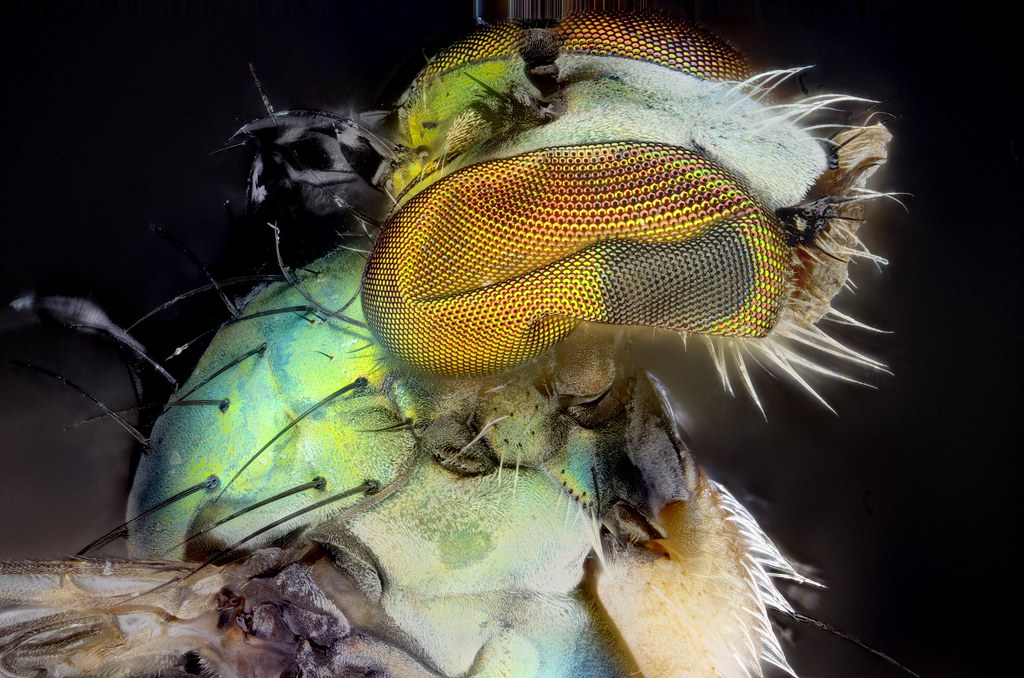The flies I have tested resist chemical attack from Draino (KOH) and from another enzyme based drain cleaner. Though those chemicals attack soft insect tissues, they are slow to dissolve fly corneas. NikonUser suggested another enzyme based agent that is engineered to attack chitin, the strong stuff in insect's exoskeleton. While promising, it was expensive and since it was not guaranteed to work I kept my money in my pocket.
I also tried sand paper, but that (or I?) was rather clumsy and it just mangled the eye. Someone else suggested a Dremel tool (high speed hand grinder) and I have one of those, so I gave it a try. Instant headless horseman...
My Dremel is rather old (35 years or so) and it makes a racket and the bearings chatter a bit, so I decided to make a small precise rotary cutter. I used a small DC motor from a CD drive (the motor that ejects the CD) and found that it ran very smoothly and reasonably fast when connected to a standard 9V battery. I glued the motor to the end of an old 35mm film canister and soldered a switch to the motor leads and battery clip. Elegantly packaged together with electric tape, I was in business.

For a trial subject I chose an vintage longlegged fly from the freezer. I glued the legs to a stick and headed to my dissection scope for the delicate surgery.

My initial test of the "shaver" used the pulley that came with the shaft. It felt slightly rough (scratchy) when I touched the rotating OD so I hoped it was abrasive enough to attach the eye. I focused the microscope on the edge of the pulley, pushed the go button and carefully brought the bug's eye to the wheel. The head twitched a bit as the wheel attacked the eye, but the motion was not violent and the head remained on the bug's shoulders. I inspected the results and was quite pleased. The cornea was abraded, the eye color changed and the bug was reasonably intact. I made two stacks of the results. The first shows the change in the eye color. Several of the ommatidia have turned white.
PMAX, 10X Oly, 200MM telephoto tube lens, Pentax K5 LED lighting.

The second shows the shaved area in profile. Note how the hairs on the eye have been trimmed by the tool. Not a bad trick to shave the eye of a tiny fly!
Crop PMAX, 10X Oly, 200MM telephoto tube lens, Pentax K5 LED lighting.











